
A winter storm system will rapidly intensify over the Midwest on Sunday and track through the Great Lakes on Monday. Periods of heavy snow are anticipated across the Upper Great Lakes late Sunday and continuing into Monday. At least 1/10 inch of ice accumulation is expected from a wintry mix across much of the interior Northeast U.S. starting Sunday afternoon. Read More >
Duluth, MN
Weather Forecast Office
Beach Hazards Awareness Week 2022
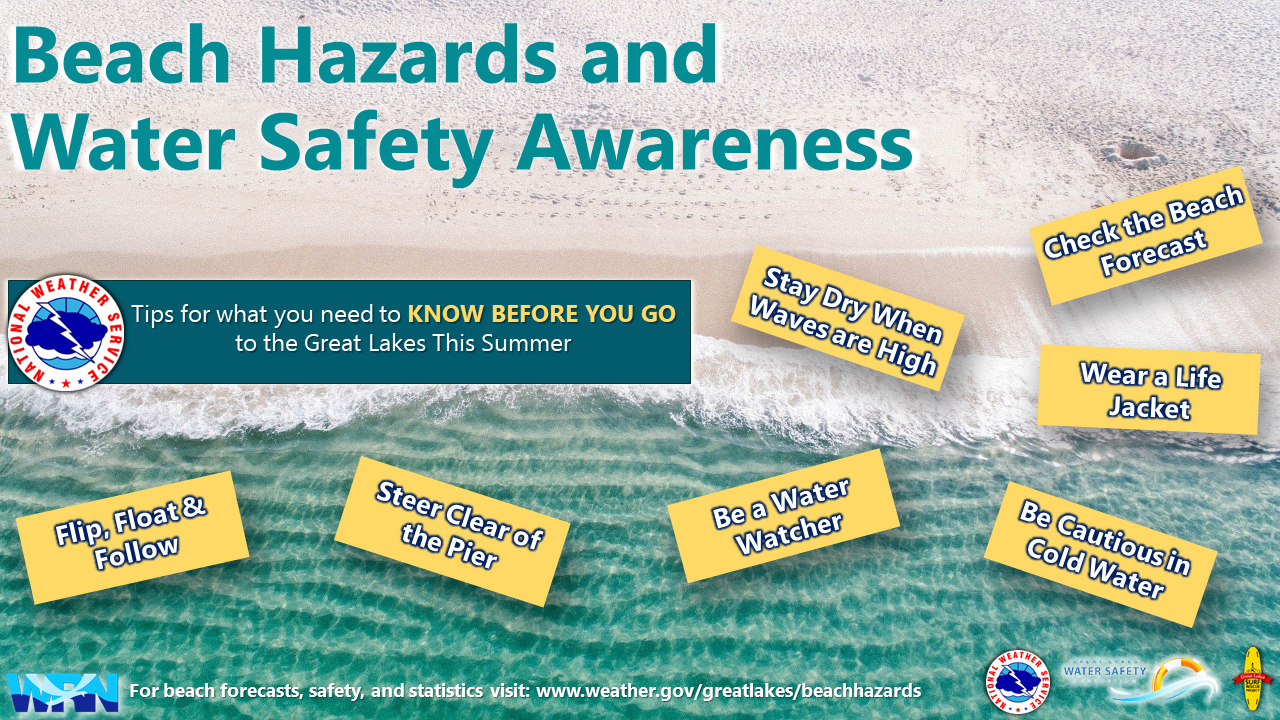
Swimming in the Great Lakes can be fun, but it is important to understand the hazards involved and how to keep yourself safe. The following slides include details on the signs of drowning, how to avoid and escape dangerous currents, and NWS Beach forecasts and statements.
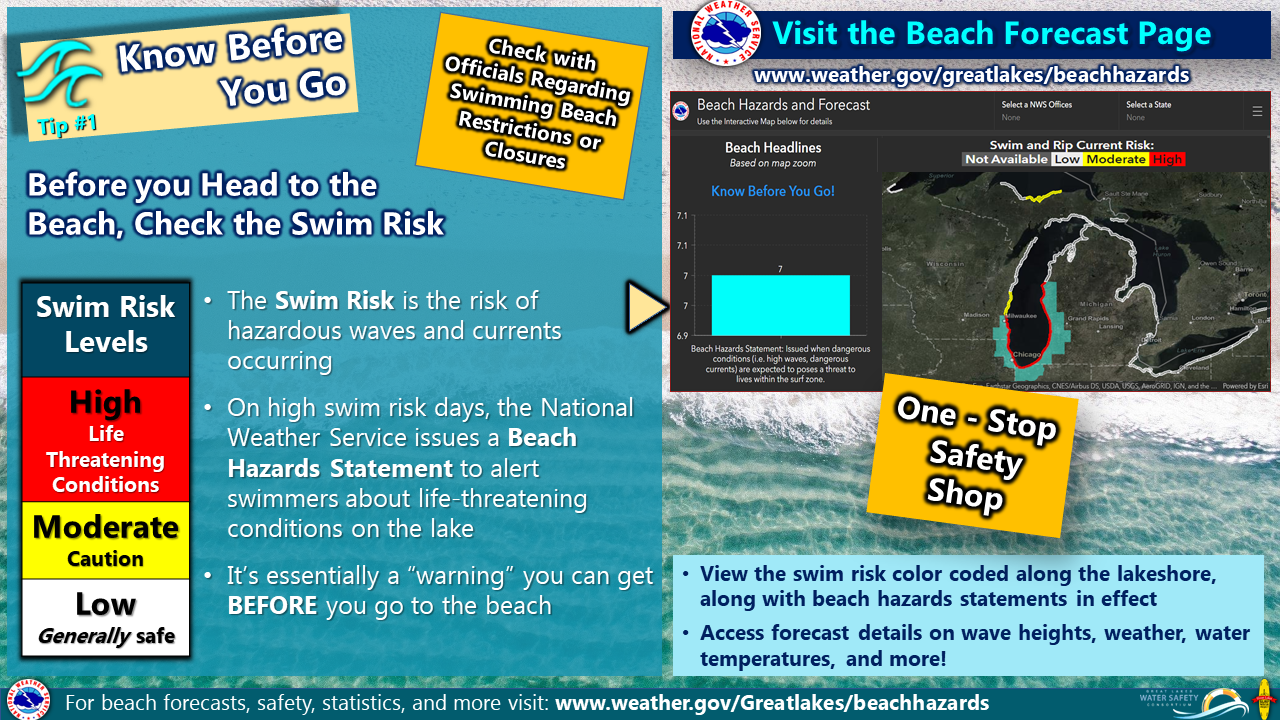
Did you know the National Weather Service produces a beach hazards forecast? Beach hazards forecasts and statements tell you when and where dangerous currents and waves are expected. Know before you go to the beach! Check it out!
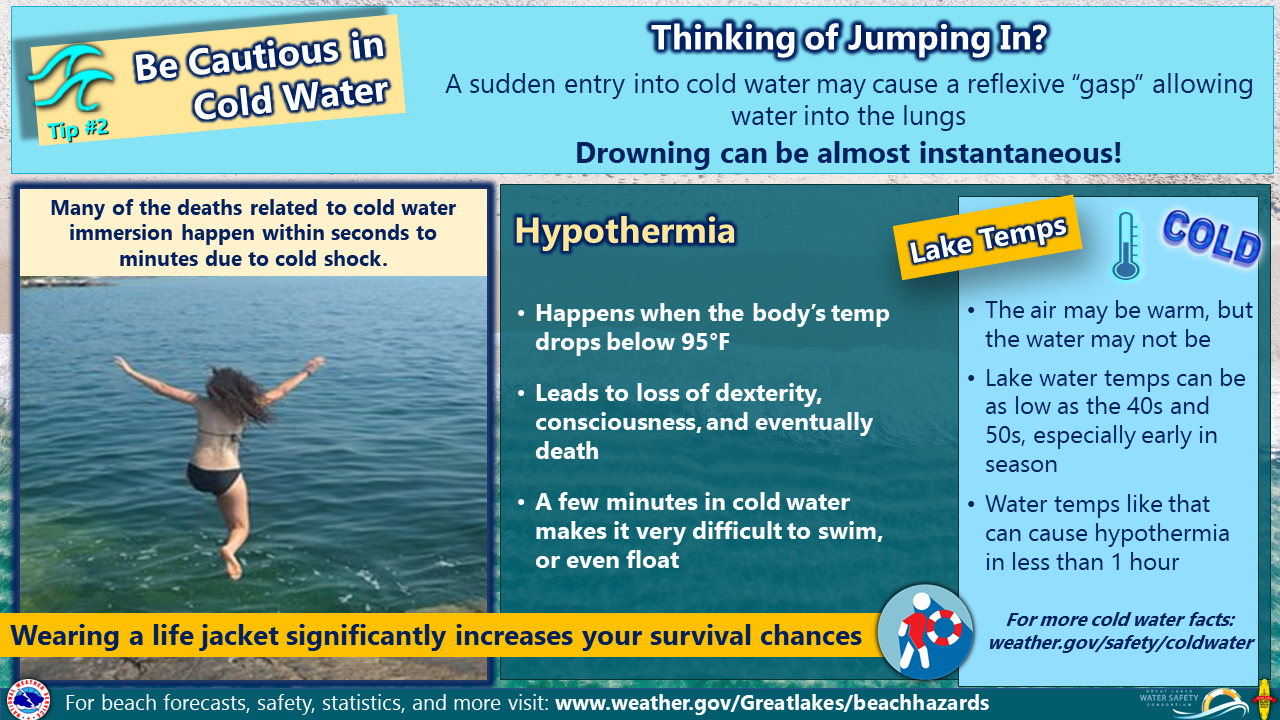
Know the water temp before you jump into the Great Lakes, especially in early summer. The air may be warm, but the water usually isn’t. Drowning from sudden entry into cold water can be almost instantaneous. Know Before you Go: www.weather.gov/greatlakes/beachhazards
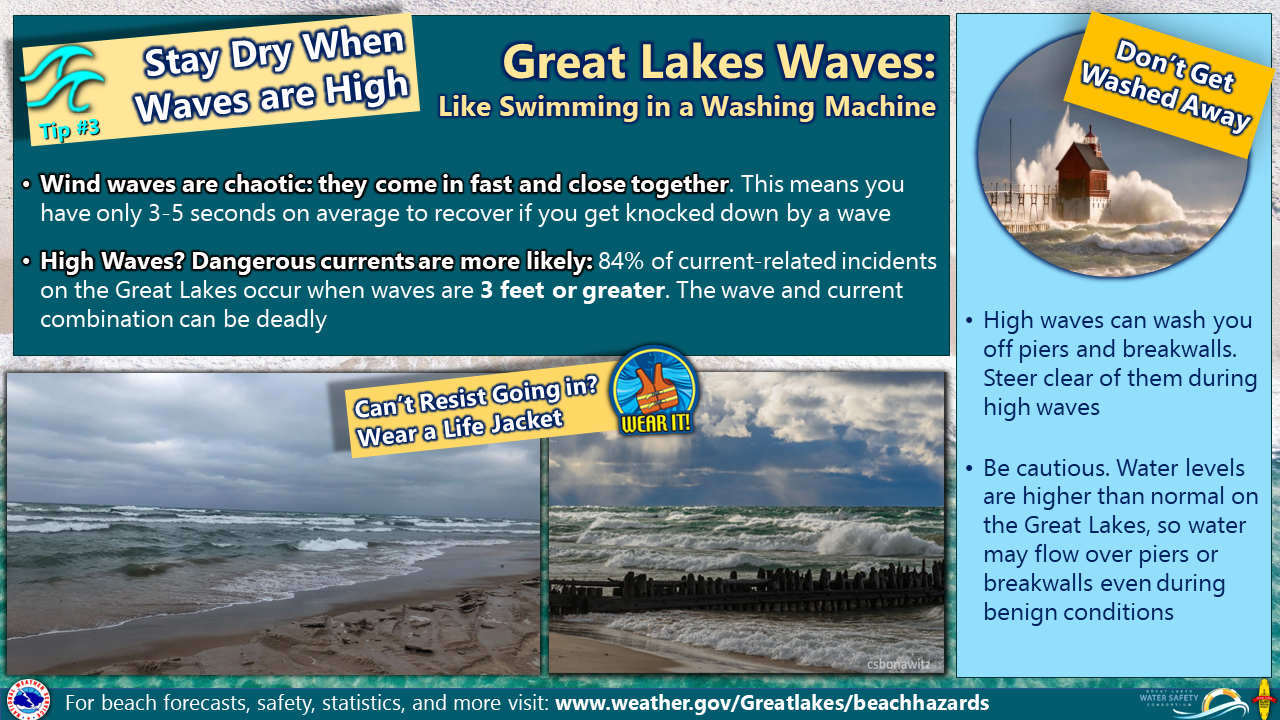
Going boating on the Great Lakes this summer? Make sure you check the marine forecast before leaving for the beach. You can get wave heights, winds, weather, and more on our marine portal at www.weather.gov/greatlakes. Don’t just bring the lifejacket-wear it! Have you ever tried to put a lifejacket on in the water during an emergency? It’s harder than you think. Safety first-it’s not worth your life.
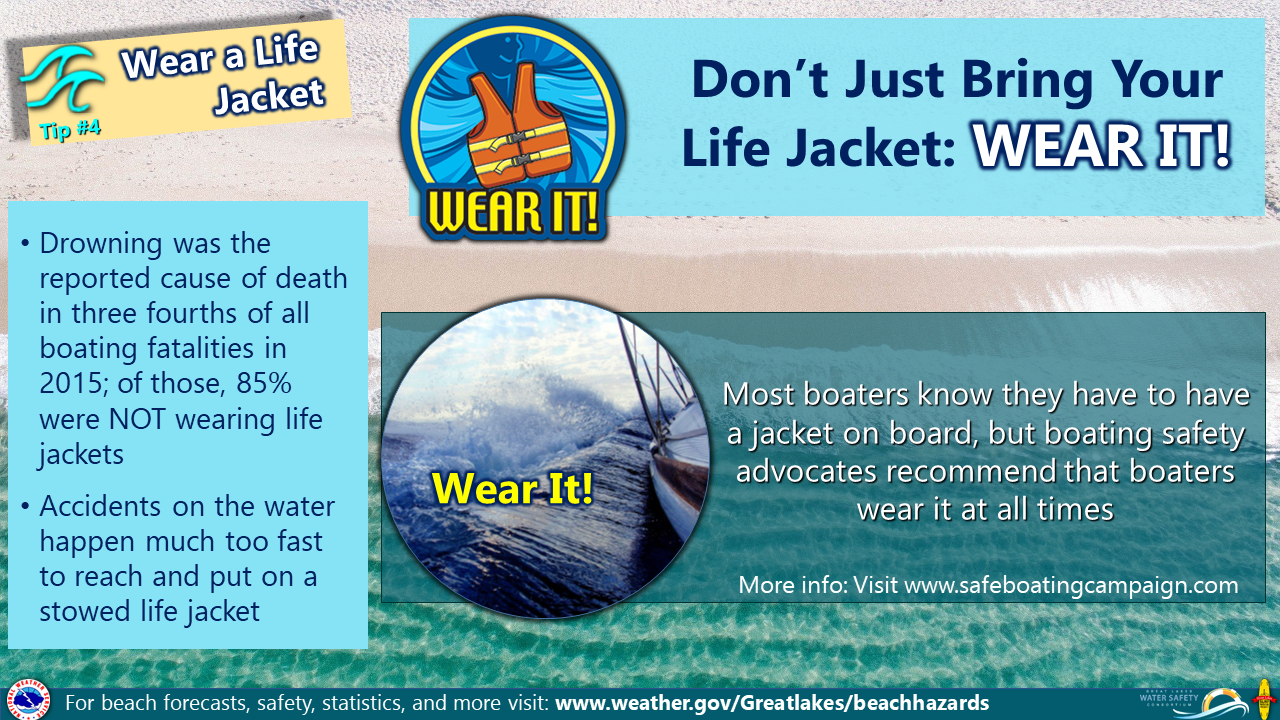
Going to the Lake? Don’t just bring your life jacket-WEAR IT. Ever tried to put a life jacket on during an emergency, or while immersed in water? It’s difficult. Accidents on the water happen much too fast to reach and put on a stowed life jacket. Visit www.safeboatingcampaign.com
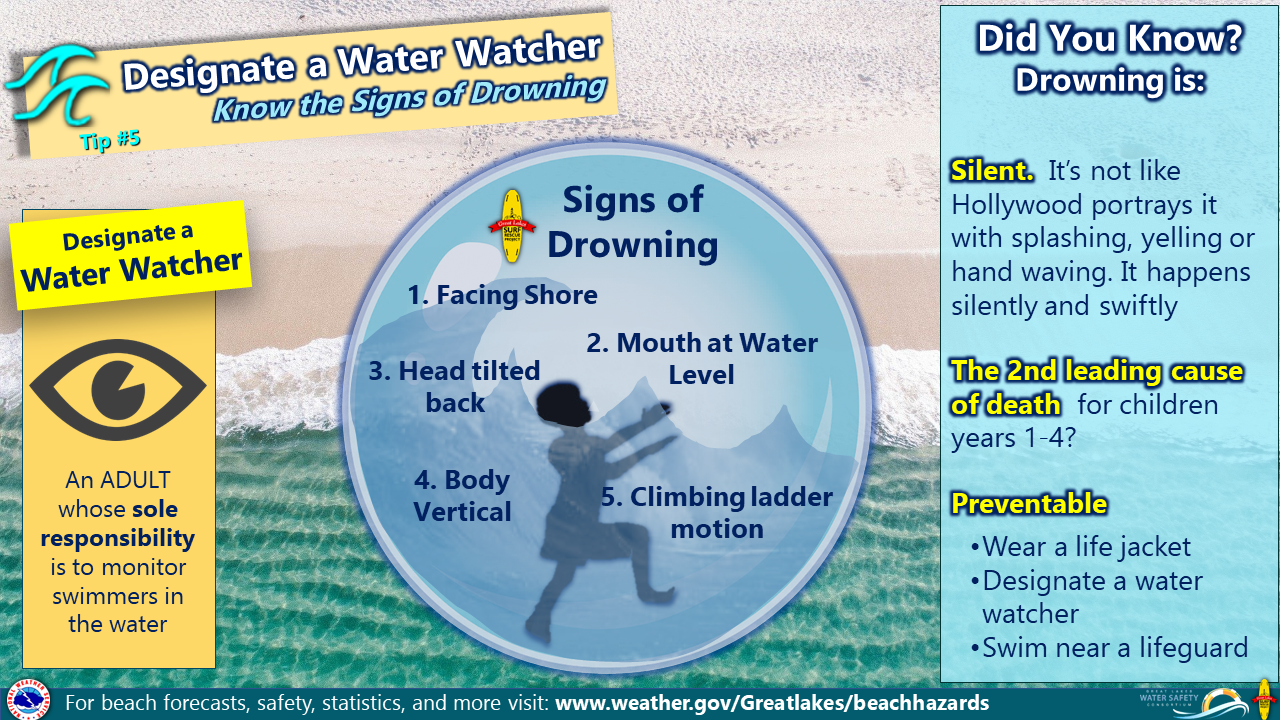
Drowning: Drowning isn’t like Hollywood portrays it-in fact it’s just the opposite. Drowning is SWIFT and SILENT. Do you know what to watch for? Make sure you designate a water watcher.
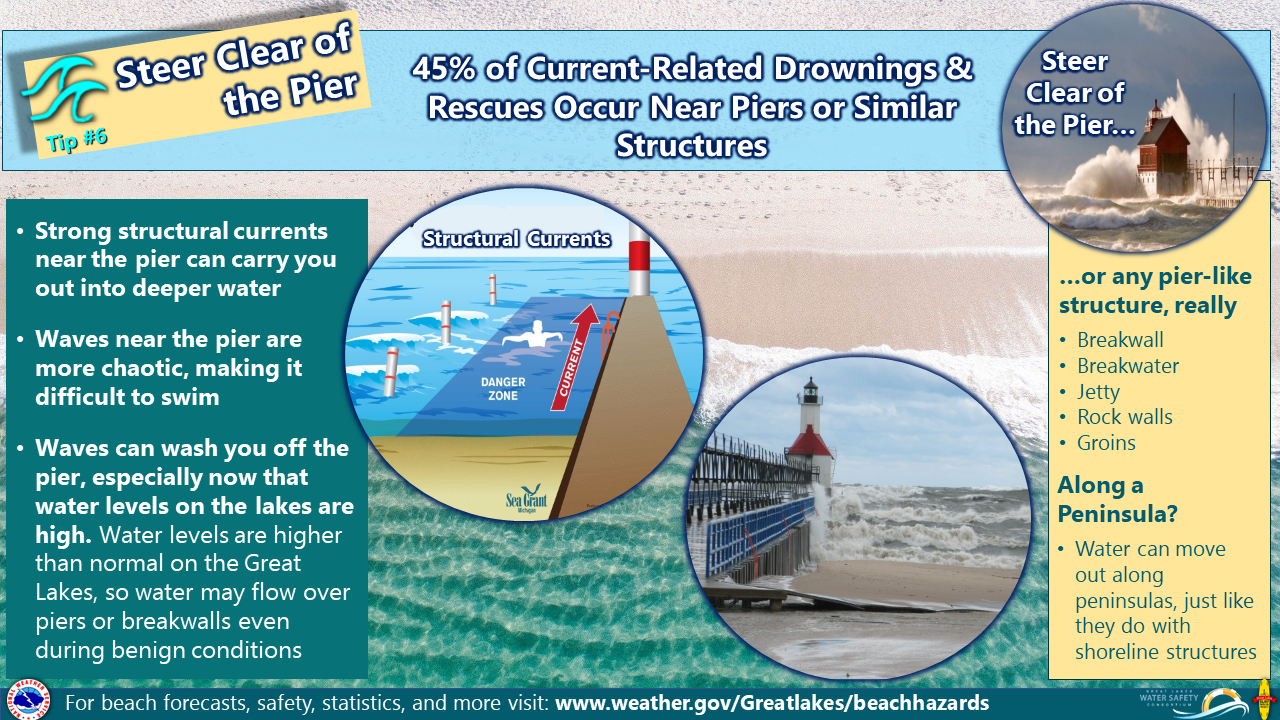
Did you know half of current-related incidents occur near piers and breakwalls? The waves near the pier are more chaotic than elsewhere, making it hard to swim. Additionally, strong structural currents along the pier can carry you out into deeper water. Steer clear of the pier!
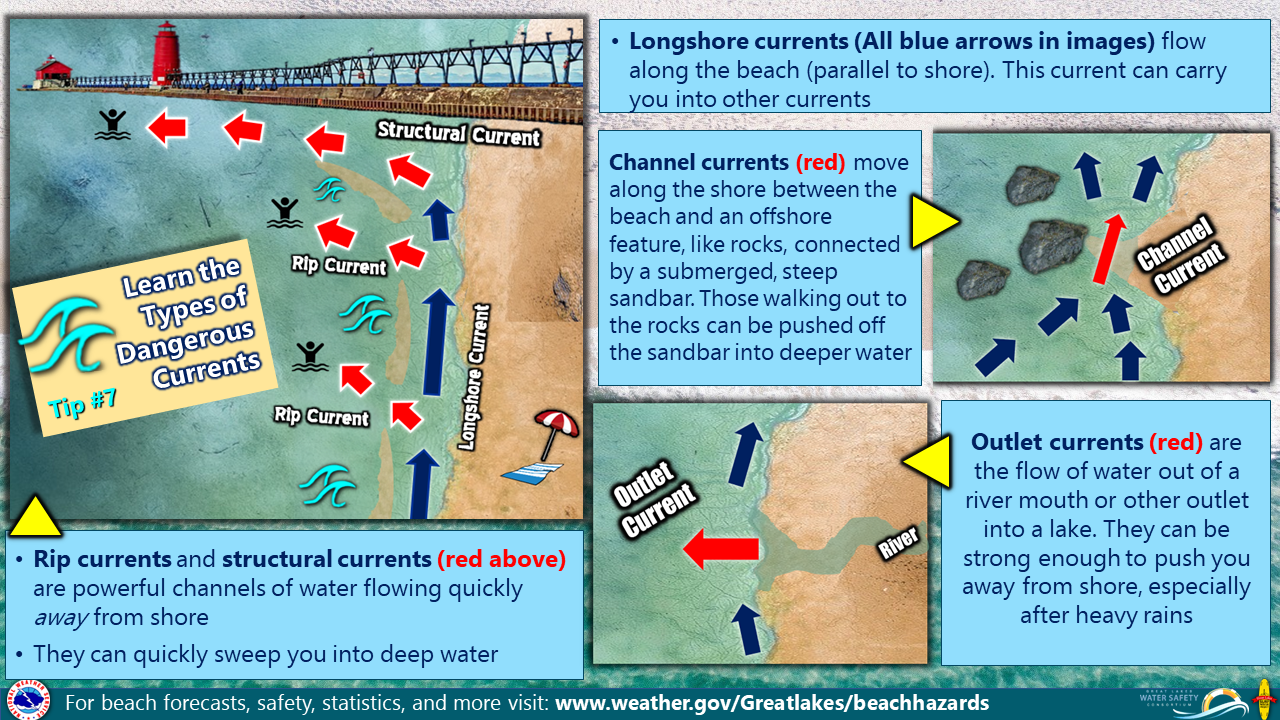
Know before you go: The combination of waves, structural, rip, and longshore currents is deadly. Be current smart: Learn where dangerous currents form and how to escape: http://www.miseagrant.umich.edu/dc/types-currents/
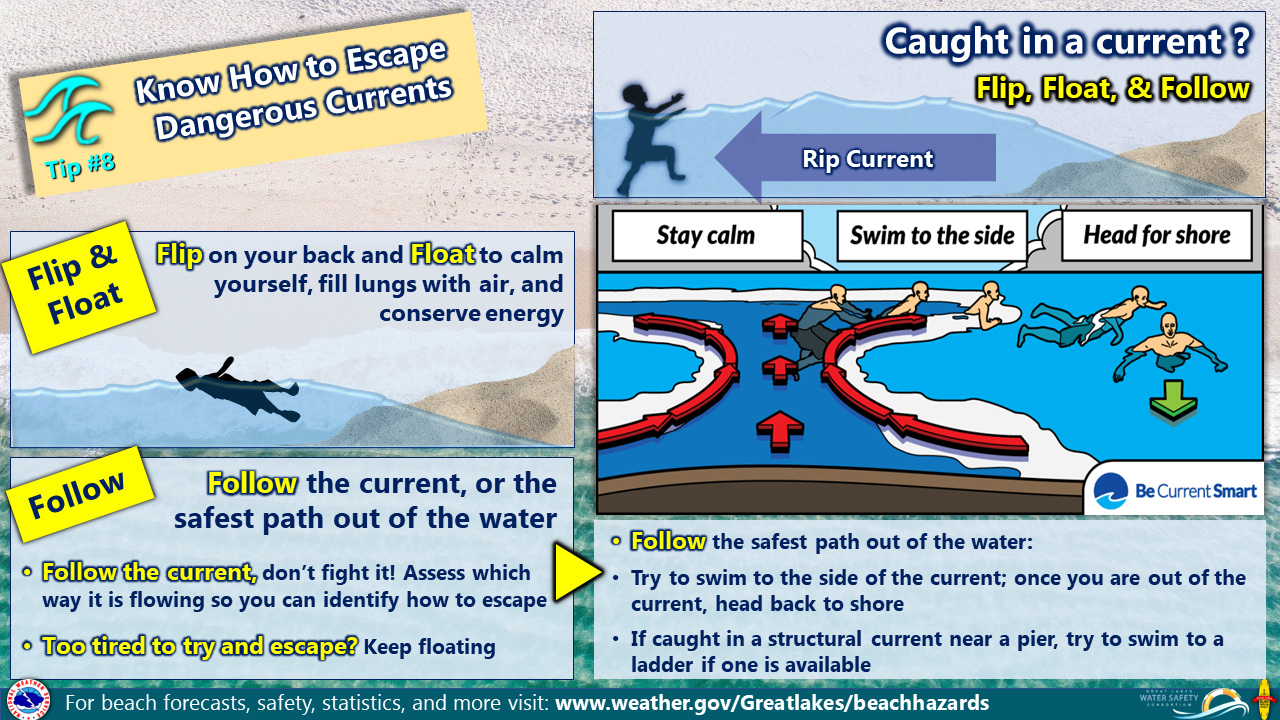
What would you do if you were caught in a dangerous current while swimming in the Great Lakes? Be current smart: Flip on your back, float, and follow the safest path out of the water.
For additional information in the Twin Ports area, visit:
http://parkpointbeach.org/
https://www.paddlesafetwinports.org/
Forecasts
Fire Weather
Great Lakes
Local Text Products
Winter Weather
Local Area Forecasts
Aviation
Marine
Rainy River Basin Page
Current Conditions
Current Observations
Public Information Statements
National Snowfall Map
NOHRSC Snow Analysis
Rain/Snow Reports
Winter Monitor
US Dept of Commerce
National Oceanic and Atmospheric Administration
National Weather Service
Duluth, MN
5027 Miller Trunk Highway
Duluth, MN 55811-1442
218-729-6697 - Duluth; 218-283-4615 - Intl Falls
Comments? Questions? Please Contact Us.

